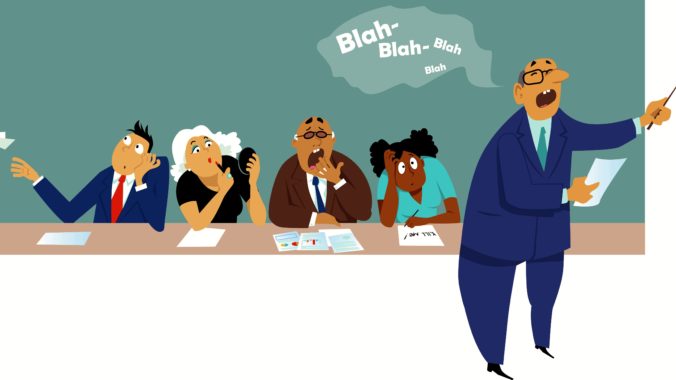LISTEN ON SOUNDCLOUD:
U.S. Senate Rule XXII, which requires a three-fifths supermajority vote of the body (60 votes) to end debate on a measure, has been on President Donald Trump’s mind lately as some of his key legislation has hit a brick wall in the senate.[1] The rule effectively empowers the minority political power because it takes a supermajority to pass legislation, and up until recently, to confirm a president’s nomination of a Supreme Court justice. But the rule, which allows for a parliamentary procedure called a filibuster, has not always been on the books, and is not mentioned in the U.S. Constitution.
The Great Compromise of 1787 reached during the Constitution’s framing made the Senate the prime legislative body to represent the states,[2] thus the Constitution provides that each state has two senators, regardless of the state’s population.[3] With this fact in mind, consider that any percentage of the Senate does not equate to a similar percentage of the nation’s population being represented.
The Constitution provides that the House and Senate “may determine the Rules of its Proceedings… .”[4] The Constitution’s framers specified five instances in which the Senate must have a supermajority vote: expelling members,[5] ratifying treaties,[6] convicting federal officials following impeachments,[7]overriding presidential vetoes,[8] and proposing constitutional amendments.[9] Both James Madison and Alexander Hamilton argued against supermajority votes in The Federalist.[10]
While some have argued that the supermajority vote that the Senate rules require to end debate is unconstitutional,[11] it has remained in place in various forms since 1806. However, the rule’s continued survival is more likely to be subject to political decisions within the U.S. Senate rather than the involvement of the U.S. Supreme Court in an internal Senate matter.[12]
Aaron Burr, who killed Alexander Hamilton in their famous duel, is credited with changing Rule XXII and empowering the political minority — that Hamilton feared — at the expense of the majority. In 1805, Burr, who by virtue of Article I, Section 3 of the Constitution, also served as President of the Senate, urged the Senate to simplify its rules to end the “Move the Previous Question” rule, arguing it was redundant to the original “question” or motion made, and in 1806, the Senate ended the rule.[13] The change to Senate Rule XXII, which was apparently made to simplify the rules, allowed for a filibuster, which is the act of speaking continuously on a motion so that a vote cannot occur. The word “filibuster” is a variation of the Spanish word for pirate, which is indicative of the parliamentary move that stops a vote from occurring. But even though the rule change occurred in 1806, no senator threatened a filibuster until 1837, and it not used until 1841.[14]
In 1917, under pressure by President Woodrow Wilson who was seeking legislation to arm merchant ships and was being blocked by the Republican minority, the Senate added a rule to allow for the “cloture of debate,” meaning to end a filibuster. Cloture is the French word for fence. The amended Rule XXII required a two-thirds vote to end debate.[15] From 1917 until 1963, cloture was rare, and was invoked only five times to end debate.[16] The Senate later amended the rule to lower the number from two-thirds of the senators present and voting to three-fifths of all of the senators, which increased ability to end debate, but which also maintained a supermajority requirement. Senators’ use of filibusters significantly increased over time to the point that almost all major legislation must now garner 60 votes to pass.
Through the years, both parties used filibuster threats to stop presidential appointees. Republicans threatened, during the President George W. Bush administration, to use what some called the “nuclear option” to modify Senate rules to eliminate filibusters of presidential appointees.[17] They backed down after raucous protests from the Democrats, and after a group of moderate senators from both parties, who dubbed themselves the “Gang of 14” reached an agreement in 2005 to allow the votes on some of President Bush’s judicial nominees in exchange for a retreat on moving forward with doing away with the supermajority requirement.
The agreement was short lived, in that when the Democratic Party gained control of the Senate, the Democrats used the “nuclear option” to end the filibuster rule for all presidential nominations except Supreme Court justices.[18] In the summer of 2016, when then-Senate Majority Leader Harry Reid (D-NV) assumed Senator Hillary Clinton (D-NY) would defeat Donald Trump in the November presidential election and that the Democrats would win control of the U.S. Senate, he said that the Democrats were prepared to eliminate the filibuster rule, saying “[i]t is going to happen.”.[19] The Democrats lost the presidential election, and the Republicans maintained control of the Senate, and the supermajority cloture rule for legislation has remained intact, but was modified to a simple majority for Supreme Court justices.[20]
In January 2017, President Donald Trump nominated Judge Neil Gorsuch to fill the vacancy on the Supreme Court resulting from Justice Antonin Scalia’s death.[21] When the Senate Democratic Party leadership announced they would filibuster Gorsuch’s nomination, the Republicans changed the cloture rule for U.S. Supreme Court nominees, requiring a simple majority of votes to confirm Gorsuch’s nomination. The Senate confirmed Gorsuch with a 54-45 vote. While Senator Harry Reid promised that the Democrats would end the supermajority cloture rule for Supreme Court justices and legislation, the Republicans ended the rule for Supreme Court justices.[22]
While filibusters are essentially dead as far as presidential nominees are concerned, they remain very much alive for votes on legislation. Filibusters can be used as a shield to try to stop legislation that a senator dislikes, or a sword to spur action on some other measure. For example, Senator John McCain (R-AZ) and senate democrats repeatedly filibustered to force a Republican senate to vote on campaign finance reform, and Senators Hillary Clinton (D-NY) and Patty Murray (D-WA) held up President George W. Bush’s executive branch nominations to successfully pressure President Bush’s Food and Drug Administration to allow so-called “Plan B” emergency contraceptives to be sold without a prescription.[23]
The U.S. Senate’s 2018 partisan split of 51 Republicans and 49 Democrats means that any Republican sponsored measure must receive at least 9 votes from the Democrats to pass, and even more votes, if some of the Republicans do not vote or do not support the measure. Whenever any political party holds a majority, but less than the 60 vote majority, that party will have to seek votes from the other party. In other words, 41 members of the Senate can stymie legislation.
President Trump’s repeated pleas to the Republican-led Senate to end the supermajority cloture rule that allows Democrats to filibuster his legislative proposals may eventually be heeded by the Senate Republicans. With former Senate Democratic Leader Harry Reid’s promise that the Democrats would do the same thing if and when they regain control of the Senate, it is likely that one political party or the other will end the rule if that party’s control remains less than three-fifths of the Senate.
Frank M. Reilly teaches constitutional law, election law, and other political science courses at Texas Tech University. He is also a lawyer in private practice in Horseshoe Bay, Texas, and serves as a municipal judge for two Texas cities. Follow him on Twitter @FrankReilly or on Facebook at JudgeFrankReilly.
[1] See e.g., President Donald Trump’s Twitter posts on June 30, 2018, June 21, 2018, July 29, 2017, and September 15, 2017. <https://twitter.com/realDonaldTrump>.
[2] The 17th Amendment, ratified by the states in 1913, changed the compromise by switching the means by which senators are chosen, from the original appointment by each state legislature to direct election by voters.
[3] U.S. Const., art. I, sec. 3.
[4] Art. 1, Sec. 5, U.S. Constitution.
[5] Id.
[6] Id., Sec. 2.
[7] Id., Sec. 3.
[8] Id., Sec. 7.
[9] Id., Art. 5.
[10] See Federalist 58 (““a minority can demand unreasonable things””) with James Madison writing, and Federalist 22 (“[i]f a pertinacious minority can control the opinion of a majority [the result will be]tedious delays; continual negotiation and intrigue; contemptible compromises of the public good”), with Alexander Hamilton writing.
[11] See e.g., Chafetz, Josh and Gerhardt, Michael J., “Is the Filibuster Constitutional?” (2010). Cornell Law Faculty Publications. <https://scholarship.law.cornell.edu/facpub/160>
[12] See NLRB v. Noel Canning, 573 U.S. ___, 134 S. Ct. 2550 (2014) (“for purposes of the Recess Appointments Clause, the Senate is in session when it says it is, provided that, under its own rules, it retains the capacity to transact Senate business”); and Raines v. Byrd, 521 U.S. 811 (1997) (individual members of Congress do not have standing to sue unless they can prove a particular injury separate and apart from that of the legislative body). See also Page v. Shelby, 995 F. Supp. 23 (D.C. 1998) (holding voter lacked standing to challenge the constitutionality of Rule XXII).
[13] Binder, Sarah A., “The History of the Filibuster,” Brookings Institution, April 22, 2010. <https://www.brookings.edu/testimonies/the-history-of-the-filibuster/>
[14] Id.
[15] Id.
[16] United States Senate, “Cloture Rule.” <https://www.senate.gov/artandhistory/history/minute/Cloture_Rule.htm>
[17] Carl Hulse, “Democrats Reject a Compromise on Judicial Nominees”. New York Times, May 11, 2005. <https://www.nytimes.com/2005/05/11/politics/democrats-reject-a-compromise-on-judicial-nominees.html>
[18] 159 Congressional Record 167, S8418, November 21, 2013. <https://www.congress.gov/crec/2013/11/21/CREC-2013-11-21.pdf>
[19] Hulse, Carl, “A Democratic Senate Might Need to Curtail Filibuster, Harry Reid Says,” New York Times, August 31, 2016. <https://www.nytimes.com/2016/09/01/us/politics/a-democratic-senate-might-need-to-curtail-filibuster-harry-reid-says.html>
[20] United States Senate, “Memorandum of Understanding on Judicial Nominations,” September 15, 2005. <https://www.gpo.gov/fdsys/pkg/CRPT-109srpt369/html/CRPT-109srpt369.htm>
[21] White House, “President Trump’s Nominee for the Supreme Court, Neil M. Gorsuch,” <https://www.whitehouse.gov/briefings-statements/president-trumps-nominee-supreme-court-neil-m-gorsuch/>
[22] Tau, Byron, “Senate Confirms Neil Gorsuch as Supreme Court Justice,” Wall Street Journal, April 7, 2017. <https://www.wsj.com/articles/senate-expected-to-confirm-neil-gorsuch-as-supreme-court-justice-1491557404>
[23] Clemmitt, Marcia, “Gridlock in Washington,” 20 CQ Researcher 17, pp. 385-408, April 30, 2010.




